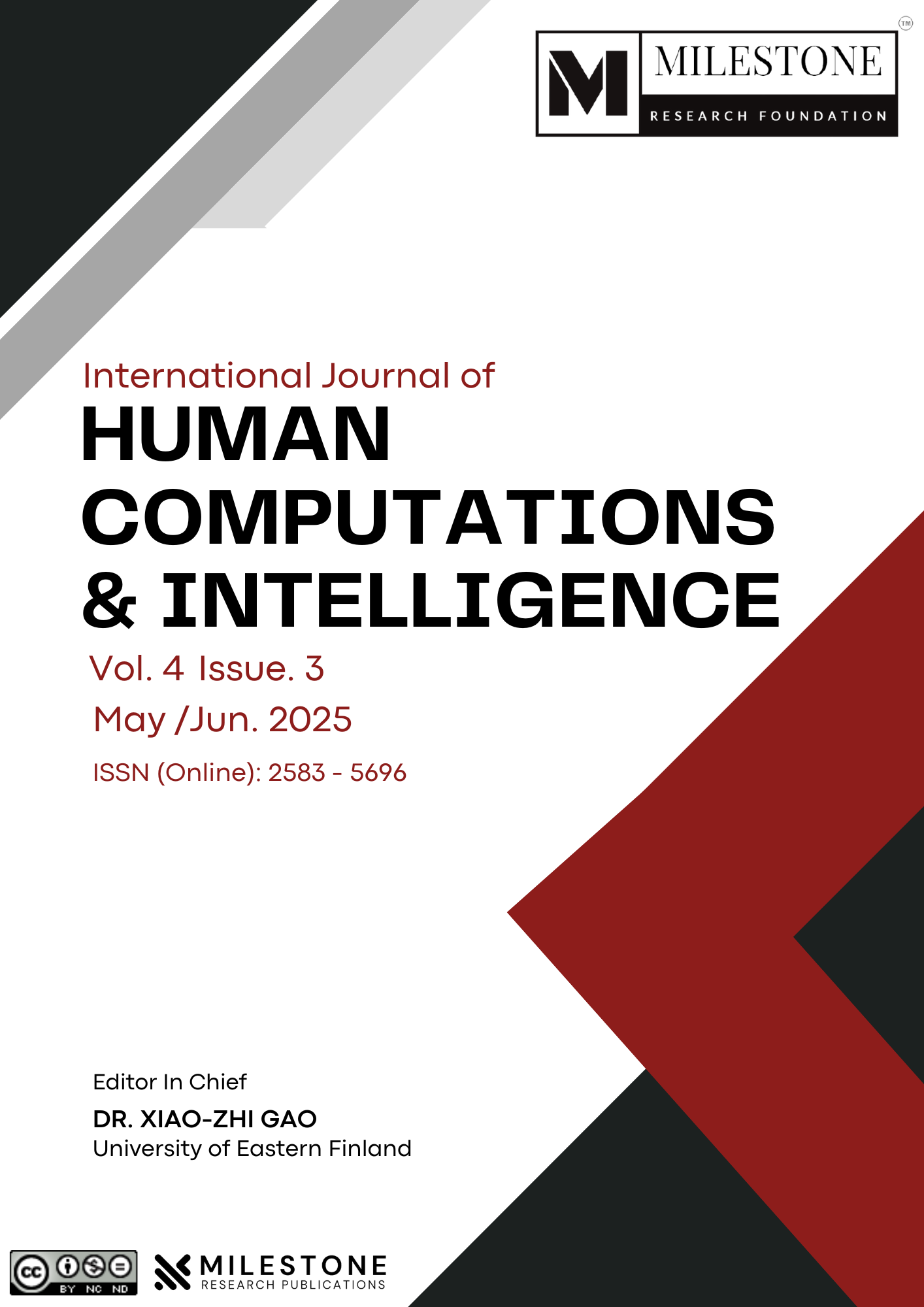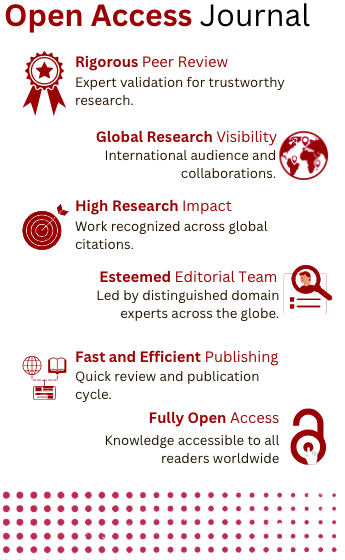Real-Time Traffic Accident Detection Using I3d-Convlstm2d and Optical Flow
DOI:
https://doi.org/10.5281/zenodo.15263530Keywords:
Traffic surveillance, accident detection, action recognition, smart city, autonomous transportation, Deep LearningAbstract
The dynamic and unpredictable nature of urban road traffic makes efficient accident detection critical for improving safety and optimizing transportation management in smart cities. This study explores advanced accident detection methods, analyzing existing techniques and categorizing various accident types, including rear-end, T-bone, and frontal collisions. We propose a novel approach using the I3D-CONVLSTM2D model, a lightweight architecture designed for smart city surveillance systems. By combining RGB video frames with optical flow data, our model effectively identifies accidents in real-time. Experimental results demonstrate the model's superior performance, achieving an 87% Mean Average Precision (MAP) compared to other approaches. Additionally, we address challenges related to dataset limitations, traffic variability, and data imbalances that impact detection accuracy. Our findings highlight the potential of integrating deep learning-based accident detection system into edge IOT devices for enhanced traffic monitoring and urban safety.References
Robles-Serrano, S., Sanchez-Torres, G., & Branch-Bedoya, J. (2021). Automatic detection of traffic accidents from video using deep learning techniques. Computers, 10(11), 148. https://doi.org/10.3390/computers10110148
Yu, L., Du, B., Hu, X., Sun, L., Han, L., & Lv, W. (2021). Deep spatio-temporal graph convolutional network for traffic accident prediction. Neurocomputing, 423, 135–147. https://doi.org/10.1016/j.neucom.2020.10.020
Wang, J., Chen, Q., & Gong, H. (2020). STMAG: A spatial–temporal mixed attention graph-based convolution model for multi-data flow safety prediction. Information Sciences, 525, 16–36. https://doi.org/10.1016/j.ins.2020.03.052
Yang, Y., Song, H., Sun, S., Zhang, W., Chen, Y., Rakal, L., & Fang, Y. (2021). A fast and effective video vehicle detection method leveraging feature fusion and proposal temporal link. Journal of Real-Time Image Processing, 18(4), 1261–1274. https://doi.org/10.1007/s11554-021-01091-6
Srinivasan, A., Srikanth, A., Indrajit, H., & Narasimhan, V. (2020, October). A novel approach for road accident detection using DETR algorithm. In Proceedings of the International Conference on Intelligent Data Science Technologies and Applications (IDSTA) (pp. 75–80). IEEE. https://doi.org/10.1109/IDSTA50474.2020.9368632
Carreira, J., & Zisserman, A. (2017, July). Quo vadis, action recognition? A new model and the Kinetics dataset. In Proceedings of the IEEE Conference on Computer Vision and Pattern Recognition (CVPR) (pp. 4724–4733). https://doi.org/10.1109/CVPR.2017.502
Xia, L.-M., Hu, X.-J., & Wang, J. (2018). Anomaly detection in traffic surveillance with sparse topic model. Journal of Central South University, 25(9), 2245–2257. https://doi.org/10.1007/s11771-018-3911-2
Wang, X., Ma, Y., Wang, Y., Jin, W., Wang, X., Tang, J., Jia, C., & Yu, J. (2020, April). Traffic flow prediction via spatial-temporal graph neural network. In Proceedings of the Web Conference 2020 (WWW '20) (Vol. 11, pp. 1082–1092). ACM. https://doi.org/10.1145/3366423.3380141
Ijjina, E. P., Chand, D., Gupta, S., & Goutham, K. (2019, July). Computer vision-based accident detection in traffic surveillance. In Proceedings of the 10th International Conference on Computing, Communication and Networking Technologies (ICCCNT) (pp. 1–6). IEEE. https://doi.org/10.1109/ICCCNT45670.2019.8944494
Jirovsky, L., Knoll, A., & Lukowicz, P. (2021). A reaction-space-based prediction model for collision avoidance in intelligent vehicles. IEEE Transactions on Intelligent Transportation Systems, 22(6), 3637–3647. https://doi.org/10.1109/TITS.2020.2973210
Nie, B. X., Xiong, C., & Zhu, S.-C. (2015, June). Joint action recognition and pose estimation from video. In Proceedings of the IEEE Conference on Computer Vision and Pattern Recognition (CVPR) (pp. 1293–1301). https://doi.org/10.1109/CVPR.2015.7298725
Fortun, D., Bouthemy, P., & Kervrann, C. (2015). Optical flow modeling and computation: A survey. Computer Vision and Image Understanding, 134, 1–21. https://doi.org/10.1016/j.cviu.2015.01.001
Saunier, N., & Sayed, T. (2007). Automated analysis of road safety with video data. Transportation Research Record: Journal of the Transportation Research Board, 2019(1), 57–64. https://doi.org/10.3141/2019-07
Lim, D., Jang, D., & Lee, T. (2016, December). Speech emotion recognition using convolutional and recurrent neural networks. In Proceedings of the Asia–Pacific Signal and Information Processing Association Annual Summit and Conference (APSIPA) (pp. 1–4). IEEE. https://doi.org/10.1109/APSIPA.2016.7820786
Mohammed, A., Ambak, K., Mosa, A. M., & Syamsunur, D. (2019). A review of the traffic accidents and related practices worldwide. Open Transportation Journal, 13(1), 65–83. https://doi.org/10.2174/1874447801913010065
Sheorey, T., & Shrivas, N. V. (2015, August). Development of sensor-based front end collision avoidance system for highways. In Proceedings of the IEEE International Conference on Information and Automation (pp. 594–598). IEEE. https://doi.org/10.1109/ICInfA.2015.7279377
Alharbi, F., Almoshaogeh, M. I., Ibrahim, A. H., Haider, H., Elmadina, A. E. M., & Alfallaj, I. (2023). Performance appraisal of urban street-lighting system: Drivers’ opinion-based fuzzy synthetic evaluation. Applied Sciences, 13(5), 3333. https://doi.org/10.3390/app13053333
Ahmed, S. T., Basha, S. M., Ramachandran, M., Daneshmand, M., & Gandomi, A. H. (2023). An edge-AI-enabled autonomous connected ambulance-route resource recommendation protocol (ACA-R3) for eHealth in smart cities. IEEE Internet of Things Journal, 10(13), 11497-11506.
Bridger, G., & King, B. (2012). Lighting the way to road safety: A policy blindspot? In Proceedings of the Australasian Road Safety Research, Policing and Education Conference, Wellington, New Zealand (p. 22).
Ahmed, S. T., Guthur, A. S., Reddy, K. S., Ahmed, A., & Reddy, T. V. (2023, December). Driver Stress and Workload Based Experience Analysis to Compute the Effects of Designing and Calibrating In-Car Navigation System. In 2023 Innovations in Power and Advanced Computing Technologies (i-PACT) (pp. 1-7). IEEE.
Marchant, R., & Norman, P. D. (2022). To determine if changing to white light street lamps improves road safety: A multilevel longitudinal analysis of road traffic collisions during the relighting of Leeds, a U.K. city. Applied Spatial Analysis and Policy, 15(4), 1583–1608. https://doi.org/10.1007/s12061-022-09435-7
Downloads
Published
How to Cite
Issue
Section
License
Copyright (c) 2025 R Bhargavi, Y Nagendra, V Siva Kalyan, S Ashfaq Ahamed, S Mohammad Ali

This work is licensed under a Creative Commons Attribution-NonCommercial-NoDerivatives 4.0 International License.







